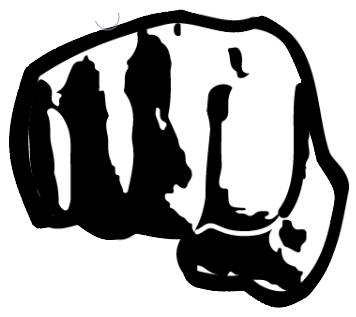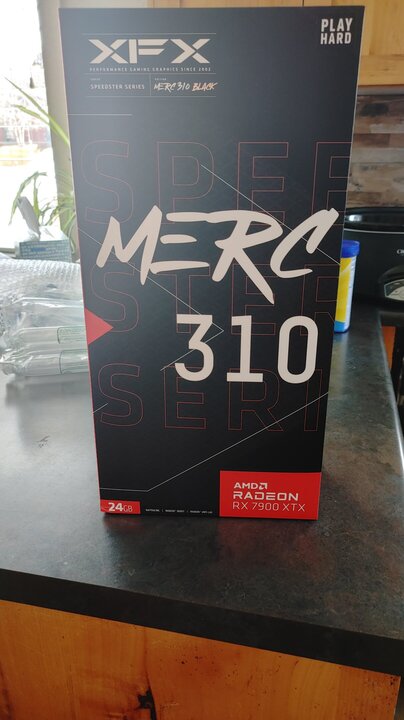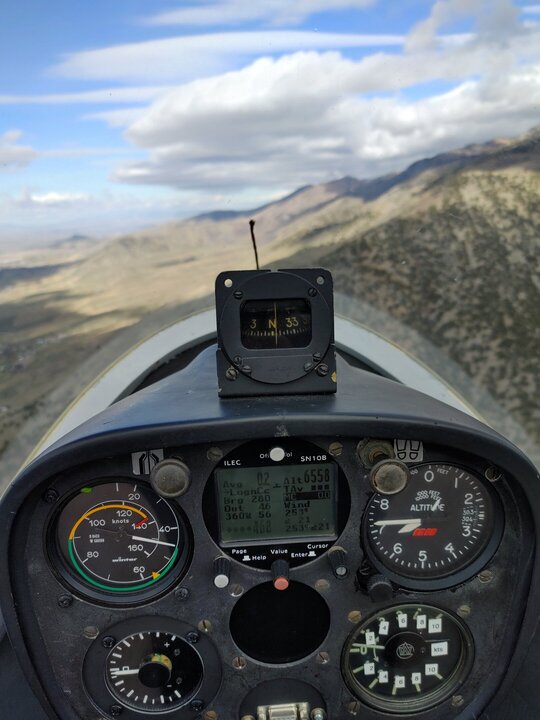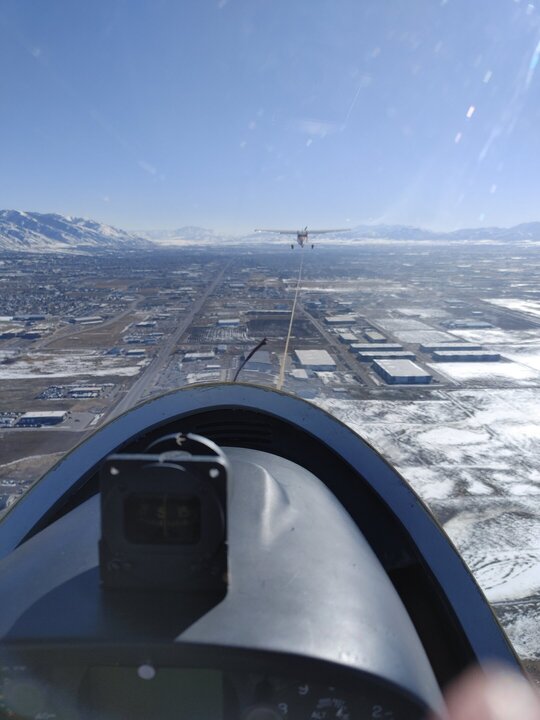Welcome to ExtremeHW
Welcome to ExtremeHW, register to take part in our community, don't worry this is a simple FREE process that requires minimal information for you to signup.
Registered users can:
- Start new topics and reply to others.
- Show off your PC using our Rig Creator feature.
- Subscribe to topics and forums to get updates.
- Get your own profile page to customize.
- Send personal messages to other members.
- Take advantage of site exclusive features.
- Upgrade to Premium to unlock additional sites features.

Kaz
News Editor-
Posts
366 -
Joined
-
Last visited
-
Days Won
40 -
Feedback
0%
Content Type
Forums
Store
Events
Gallery
Profiles
Videos
Marketplace
Tutorials
Everything posted by Kaz
-
Source This is a major case. At it's core it threatens every social media platform. Platforms have long been protected because "it's our users!". When they start pushing certain topics/objectives, or even singling out users for content, they are no longer just a content host, but an advocate. Be it an advocate for certain topics, or an advocate for certain companies (advertisements), the argument of, "We are just a host", deserves scrutiny. I think Judges are afraid of ruling against the most impactful industry in the world, because... Money... I wouldn't lose any sleep over a more decentralized internet... I do wish it was challeneged on a basis other than tightening government control over content...
-
I didn't design it, that would be NwAvGuy who mysteriously disappeared some time after release. That Mainline is really cool!
-
Using ODAC/O2 Amplifier. I built the O2 Amplifier, I like DIY projects... Currently using Senheiser 650's. My ear pads are starting to wear out, any suggestions on good replacements? I heard leather can change the sound profile.... I'd love some gel ear pads, but I do wonder if it'll mess up the sound. Retired Senheiser 598's. I also use a Mod-Mic 5. I don't understand why any headphone designers make microphones that can't pop off when they bump stuff. I could have broken that thing so many times...
-
This applies to several major providers in the U.S, it's simply the game they train their customer service agents to play. It may also apply to other locations. I thought some people might appreciate the knowledge. It's no secret, most ISPs offer a great introduction price, then after 6 months to 1 year, they raise the price. What you may not know, is you can call and talk to billing, and they will offer you another "great price for a limited time!". Ok, you probably know you can renegotiate, but did you know, billing is actually the wrong person to talk to? The correct choice is to talk to cancellation. Most companies have a separate department for billing and cancellations. The job of billing is to sell you on the value of your service, "sure, I can get you a lower price, but you need to sign a contract, or reduce your speed, drop your data, or lower TV channels." Overall, it'll probably be the same service for $10 higher than you initially started at, but lower than their increased price. If your upset about the options and decide to cancel, a billing agent will say, "I'm sorry to hear that. Let me get you to someone who can do that for you." Now you're talking to a different agent, their retention department. That agent will offer you different deals in an attempt to save you, they may even get you back on the same price you were paying before. Some agents are better than others, and having a service complaint along with the general price complaint, is usually enough to get them to try and save you as a customer. "I can get that bill down, let me get you over to tech support to fix your problem". Suddenly that $10 increase, isn't the same as it was before. Saving you as a customer is more important than milking an extra $10. If the retention agent doesn't try to save you as a customer, they are bad at their job. Simply schedule the disconnect out a day or two, then cancel it and repeat the process until you find a competent agent willing to give you a decent discount. I really hate all the games that ISP's play. If there's ever a fair one with straightforward billing, I'd gladly switch to them in a heartbeat.
-
[Official] AMD Radeon RX™ 7900 XTX / 7900 XT Owner's Club
Kaz replied to Slaughtahouse's topic in AMD
Yeah, I'm having trouble changing my gaming habits to actually use the new found power. For so long I've gravitated away from stuff my system didn't run well. Speaking of.... I own a Gladius, my friend bought me an upgrade back when there was no way in game to upgrade ships. My old system complained a lot about Star Citizen so I quit playing, but that was supposedly before they fixed the netcode. (Every computer was processing everything on the server). The Caterpiller was guaranteed to crash a server. The bugs, they were good times... Like sending a ship into an endless spin by exiting, making the ship unrecoverable because it would whack the player and send them flying a looong ways away. Hit me up sometime if you want to play. It might take me an hour or two to get past the main boss *cough* keybinds *cough* -
[Official] AMD Radeon RX™ 7900 XTX / 7900 XT Owner's Club
Kaz replied to Slaughtahouse's topic in AMD
I'm not actually good at competative FPS, I quit playing them when I felt disadvantaged. Those moments when I know I clicked, but my shots never went off. Playing siege now feels really fun. If I die, it's because I legit screwed up. Not because I lost the reaction game... Guess I'll br trying to pick up more FPS games, might look into Quake Champions. My true love is flying/space sims. One day.... Star Citizen will exist... I've played a Lot of Elite Dangerous, but I'm generally frusterated with the direction Frontier Development went. I'm looking into Everspace 2, but my attempt to Calibrate my CH HOTAS was fraught with disaster. Windows 11 isn't playing nice with their outdated drivers (have to disable core isolation if I want to use them.... Not sure I want to do that). I need to take my pedals apart and clean the potentiometers my right toe brake takes a long time to reset to 0 after pressing it. -
[Official] AMD Radeon RX™ 7900 XTX / 7900 XT Owner's Club
Kaz replied to Slaughtahouse's topic in AMD
I think you made the right choice. 7900xt was hitting 240hz+ (Often 260-280) @1440p in Shadow of the Tomb Raider. It really is a good card. I don't think it will bat an eye at 4k60. I did notice some pretty bad stutters at times when the game drops to 10 fps, but after playing through, I'm convinced they made 0 effort to optimise for PC/AMD. I had to force 60 fps to make some of the puzzles actually work. Plus, trying to use mouse and keyboard on the Map is infuriating. I liked previous Tomb Raiders, but Shadow of the Tomb raider will be the last one I buy. Dev's just did a copy/paste of previous games. It lacks love. -
[Official] AMD Radeon RX™ 7900 XTX / 7900 XT Owner's Club
Kaz replied to Slaughtahouse's topic in AMD
I bought 2 LG 32" 1440P 240hz monitors @$500 each. I had some buyers regret until I figured out image sharpening is a thing. (Text was fairly blurry without it. Actual gameplay/image still looks good. Now I'm wishing I had a 3rd. (Max resolution for the card!) They went up in price about $180 since I bought them. Makes it harder to justify buying a 3rd... 32" 4k 144hz was about double the price, ($800-1000) but arguably may have been a better choice. I think 4k will age better... The 240hz version was $1500 so... I coupd buy 1 monitor or 3.... I think I'll make the jump to 4k when 240hz is more common/affordable, maybe in a few years. Prior I was using a Yamakasi 27" 1440p. It used to overclock but started having issues displaying when it wasn't warmed up. Stock refresh still works fine. Sadly the Yamakasi is duel Dvi only, and active adaptor links seem to be close to $80-90. Feels bad to spend that on and old monitor that was $350 to begin with. There's a noticeable sharpness difference between 27" and 32" at 1440p. I think 32" 4k will be a nice sweet spot. I'd like to get into VR, but I think waiting for a refresh of the Valve Index is the way to go. Unless anyone has some good recommendations. -
I didn't know I needed this... I really love open source hardware. What's the rough cost when it's all said and done?
-
[Official] AMD Radeon RX™ 7900 XTX / 7900 XT Owner's Club
Kaz replied to Slaughtahouse's topic in AMD
I bought the 7900XT first because I was desperate and couldn't find an XTX in stock. The XT had issues with the 2nd display port being intermittent. Basically after low/no power states it would fail to display. I'd spend half an hour trying to force it to display, finally succeed only to come back after lunch to the same problem. I sent it back, the new card has been a dream. The XT was probably enough graphics card for me. Coming from a GTX 970, I still haven't figured out what to do with all this card. It's a beast. -
techspot Microsoft testing native RGB controller in Win11
Kaz replied to UltraMega's topic in Software News
This feels like IE vs Netscape. There's a perfectly good option, OpenRGB available, but Microsoft is going to take over the market. -
FE only, I was tempted with that 3080 price, they were already sold out. But hey, some Ebay sellers are offering a "Discount" if you buy more than 1! (at $559.99) They also include a nice note: I really want the scalper market to go down in flames.
-
cnn Deepfake news videos are starting to emerge
Kaz replied to UltraMega's topic in Journalism & Entertainment
Boyd's video does the mouth movement really well. CNN's complaint of, crappy AI can't get the mouth right is just that company's version of it. It looks like recording a real person delivering the script they want, then using open source software to change the face to whomever they want, could get pretty respectable results. It is interesting that once you know the facial points the software is using, it's easy to look at those spots and identify if they are correctly moving with facial expressions. it is possible to spot a deepfake, but it requires knowledge of how that program works. -
cnn Deepfake news videos are starting to emerge
Kaz replied to UltraMega's topic in Journalism & Entertainment
-
I have not, but it does happen from time to time. I live close to a mountain range, as the air passes over the mountain it goes up, which is right where a glider wants to be. About 2-3 hours in my back starts to hurt and a bathroom starts to sound real nice. Thermalling is a lot harder than riding a ridge, thermals tend to move, so while I might be able to circle in the same place, I have to account for what direction the thermal is going or I can't stay in it.
-
Avoid the 990 pro if you can. They have a high failure rate.
-
-
AI is eating itself: Bing’s AI quotes COVID disinfo sourced from ChatGPT
Kaz replied to Kaz's topic in Software News
This problem isn't unique to AI, it's just that AI doesn't know what it's saying. Anyone can post anything online, that's why understanding the logic is key to understanding how much value or faith we should put in it. Wikipedia was thought to be a terrible idea by college professors, because there was no authoritative figure to verify the data. I've known professors who refuse wikipedia as a source. The challenge is trying to build an AI database when other AIs are messing with that database. Poisoning the database is a security vulnerability. I'm reminded of South Park Alexa (until 3:42) -
AI is eating itself: Bing’s AI quotes COVID disinfo sourced from ChatGPT
Kaz replied to Kaz's topic in Software News
Wow, I had no idea! Rumor has it Bing is a really great search engine for porn. I uhh, never use it though....







